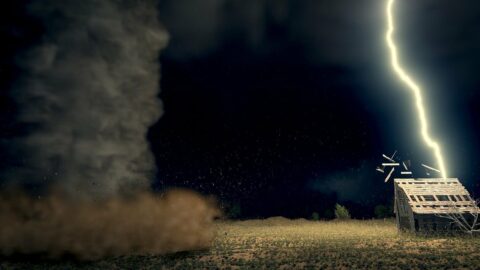Most major impact events have ripple effects and consequences. Sometimes these ‘aftershocks’ are predictable sometimes not. Organizations should plan for both.
We’ve focused on hurricane and tornado risks in our two recent insight pieces, and these are both good examples of dynamic risk situations, with the potential for catastrophic ripple effects.
Infrastructure damage, power interruptions, loss of communications channels, and road closures – all are predictable as possible consequences, and plans can be developed (and rehearsed) to mitigate these risks. SafeZone’s powerful, real-time co-ordination and response platform can be put in place, to improve community awareness and command and control.
And, alongside backup systems and failsafe technologies – multi-channel communications, for example, and uninterrupted power supplies – this will build resilience further.
But hurricanes can trigger less predictable consequences too. According to recent research, 66% of U.S. residents say they have missed work, 40% say they have been unable to get necessities (food, water, gas, etc) due to natural disasters, and only 36% feel prepared for major weather events.*
There are countless unexpected ways for people to get into difficulty as a direct result of extreme weather events. So organizations with a duty of care to large populations of staff or service users – healthcare providers, universities, major utilities, and public agencies, for example – face a particular challenge.
To address this, they should ensure that their response capabilities are as dynamic as the risks they face, equipping their response teams with the tools to be flexible, adaptable, and fast.
For example, with SafeZone’s first responder functions you can use related information and team co-ordination to speed officer response and reduce workload pressure – setting up emergency notifications, with pre-defined messaging for a range of scenarios (partial or total site evacuation; shelter in place advisory; stay away because facilities are closed, etc).
Adding more flexibility still, SafeZone’s targeted and tactical mass communications tools make it easy to target relevant and specific notifications to specific groups, again, with pre-defined or ad-hoc messaging; and they allow easy two-way communications between control room teams and individual users or groups, regardless of location.
Leveraging these capabilities, we are working with many organizations facing hurricane risks, giving them the tools and knowledge to build preparedness:
- Before a hurricane or tornado strikes, organizations should establish and communicate clear safety protocols to their people. Familiarize users (staff, students, etc) with the features and functionality of SafeZone’s targeted and mass communication features, emphasizing its role in supporting incident response. Users need to know how to use the application to check in and share their presence in real-time during severe weather events. Conduct training sessions or provide instructional materials to ensure that users understand the procedures and feel confident.
- Customize SafeZone’s workflows to align with your specific circumstances – it’s easy to do, and it makes a big difference. Create geofences within the SafeZone platform that correspond to the likely affected areas or evacuation zones. Ensure that these zones are clearly defined and accurately reflect the areas of concern. You will then be able to invite users to share their locations in real-time and provide assistance or updates based on their proximity to the impacted area.
- During a hurricane or tornado, your response will be improved by having prompt and accurate information. So encourage users to check in with SafeZone and share their locations as soon as they can. This information enables assistance to be prioritized. Reinforce the importance of regular check-ins and updates, using SafeZone’s two-way messaging capability, explaining how responders rely on accurate reporting. Encourage employees to use the app’s two-way communication feature to provide updates, share images and documents, report safety concerns, or seek assistance.
- Ensure that incident response teams actively monitor and respond to these messages, providing timely guidance and support. This bi-directional communication helps establish a sense of security and empowers staff members to actively participate in their own safety.
- SafeZone’s real-time location-sharing capabilities also enable incident response teams to communicate and coordinate with external emergency services and authorities, fostering a more efficient and effective response to severe weather events.
- After the incident and recovery phase, conduct a thorough evaluation. Analyze the data collected through the command playback studio to identify any areas for improvement or adjustments to the incident response procedures. Seek feedback from staff members regarding their experiences with SafeZone and use this input to refine future incident response plans.
- SafeZone’s real-time location sharing allows incident response teams to efficiently coordinate resources (first and secondary responders) and plan evacuations during hurricanes or tornadoes. By monitoring staff members’ locations and availability, organizations can quickly determine who needs assistance, identify individuals in need of evacuation, and deploy resources accordingly. SafeZone’s real-time location-sharing capabilities also enable incident response teams to communicate and coordinate with external emergency services and authorities, fostering

If you’d like to discuss safety, security, and emergency management transformation and/or find out more about our consultancy offerings, please get in touch.
*Source: 2023 Natural Disaster and Severe Weather Preparedness Survey 2023, Motorola
